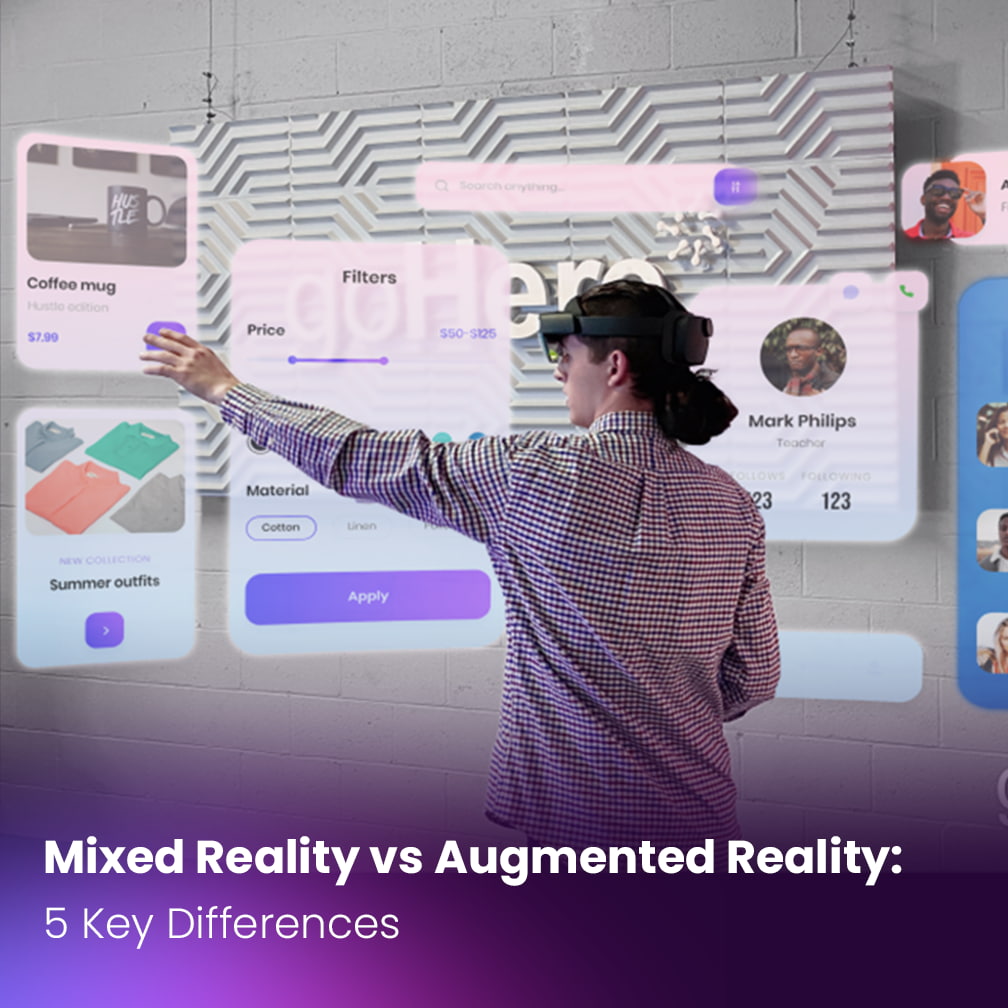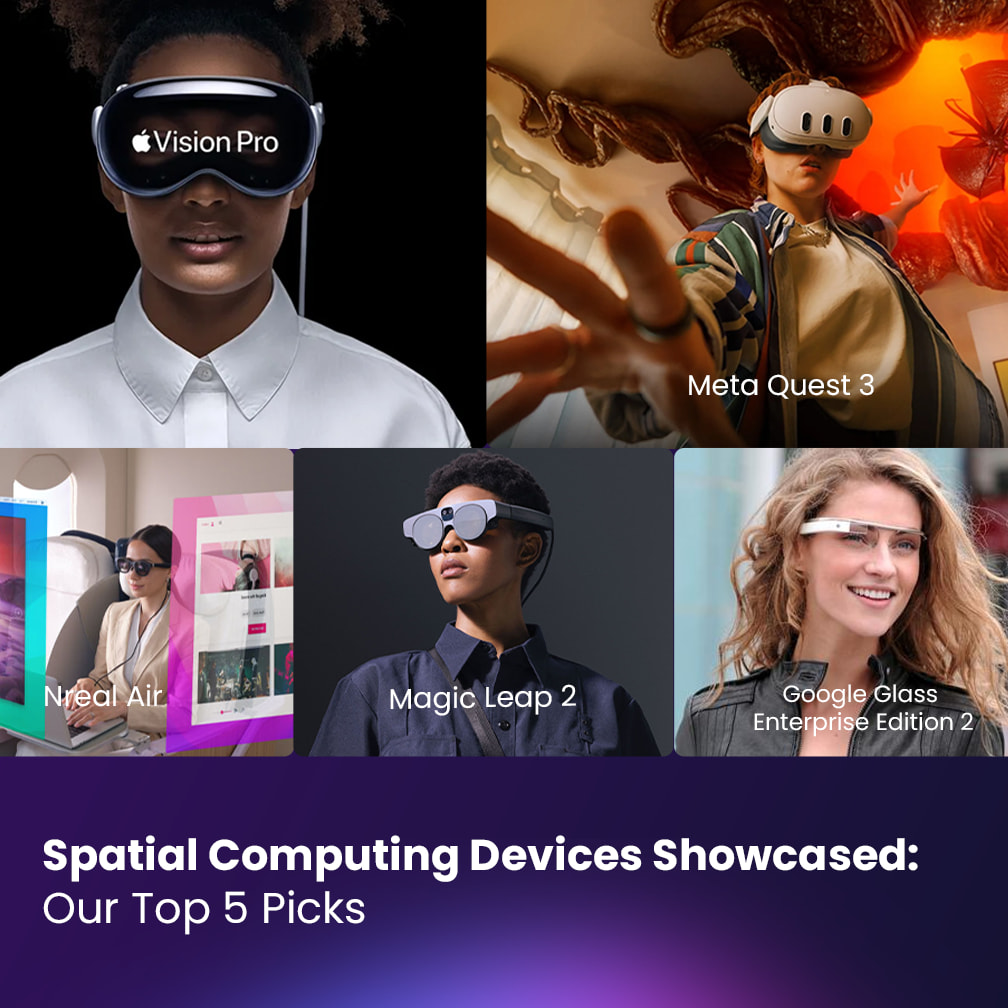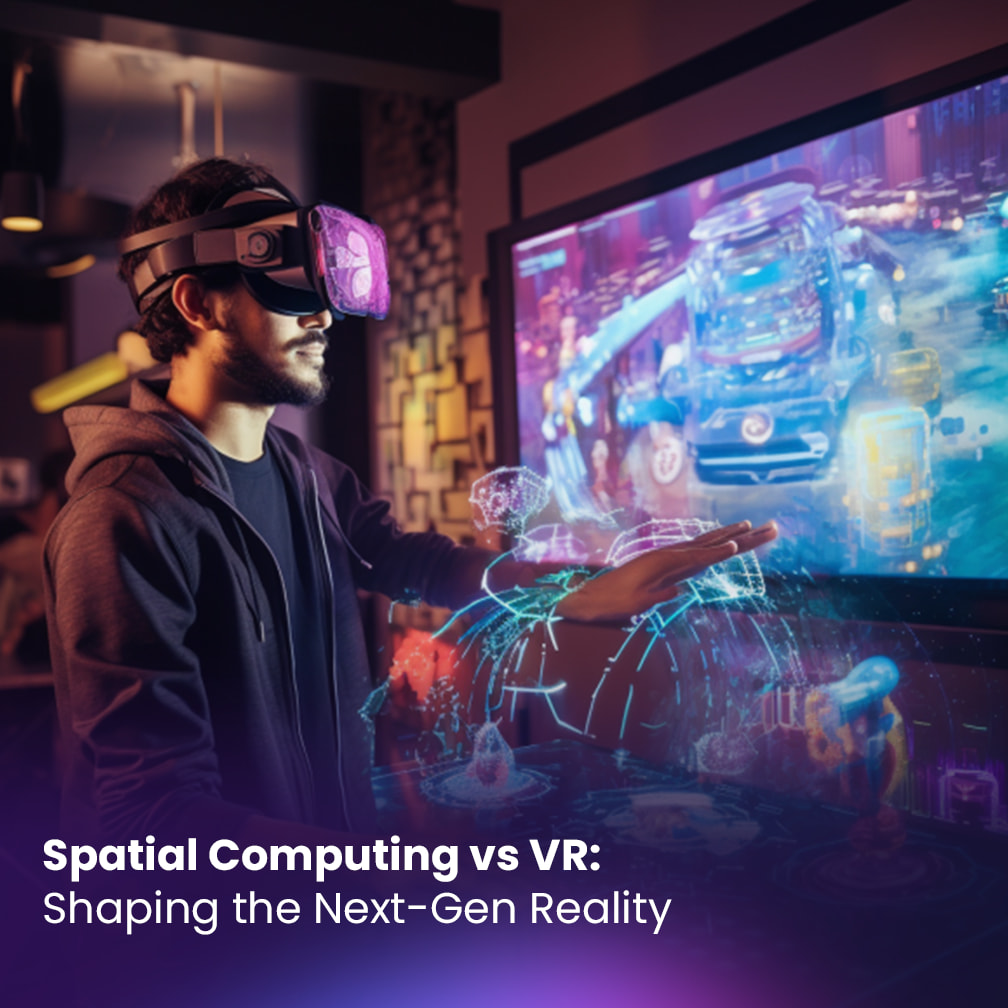
Estimated reading time: 6 minutes
Table of contents
A Quick Intro to Mixed Reality vs Augmented Reality
Before we dive into the mixed reality vs augmented reality nitty-gritty details, let’s quickly define what we mean by MR and AR.
Augmented reality overlays digital information and objects onto the real, physical world. AR technology adds layers of virtual elements to your surroundings viewed through a device. For example, Snapchat filters that put silly hats and masks on your face use AR.
Mixed reality goes a step further by anchoring those virtual elements to the real world so they interact with the environment. MR seamlessly blends together real and digital objects, creating a hybrid view of both physical and virtual elements.
1. Interactivity with the Physical Environment
One of the biggest differences between mixed reality vs augmented reality comes down to environmental interaction.
AR overlays graphics and data onto your surroundings, but those virtual elements can’t interact with or impact the physical environment. They are simply displayed over top of the real world view.
With MR, irtual objects are mapped to the actual space and can interact with real objects. For example, an MR headset can scan your physical room and then generate a virtual animal that walks around your floor, jumps on your couch, hides behind your chair, etc. The digital creation is embedded in your actual room.
2. Persistence of Virtual Objects
Another key difference is persistence – how the virtual objects act when you’re not looking directly at them.
In AR, the digital elements only exist in your current field of view. If you look away or move devices, those overlays disappear from sight. AR objects are only rendered when directly in view.
Meanwhile, MR anchors virtual objects to set points in the physical environment. Those holograms persist even when you look away or move around the room. The virtual elephant hiding behind your desk won’t vanish just because you turned your head.
3. Environmental Understanding
MR also has much more detailed spatial awareness of the physical environment versus AR.
AR requires some surface detection to anchor the digital overlays, but doesn’t comprehensively map and understand the full environment. AR objects float over top of the general space.
Mixed reality tech actively scans and reconstructs the entire physical environment in 3D space. This lets the virtual objects interact appropriately with all the fixed surfaces and contours. MR has a fuller comprehension of the real world setting.
4. Position Tracking
The next big difference is position tracking – how the tech follows the user’s location and point of view.
AR usually relies on more basic position tracking through devices sensors. This allows for rough estimations of where the user is looking from to layer overlays appropriately. But the tracking isn’t perfect.
MR utilizes more advanced positional tracking like spatial mapping, simultaneous localization and mapping (SLAM), and outward-facing cameras. This precisely identifies the user’s position relative to the physical environment for accurate digital placement.
As a result, MR overlays stay grounded in context as you move around. If you peek under the virtual table, the view adjusts seamlessly based on your new perspective. AR has more trouble smoothly integrating objects as you shift viewpoints.
5. Immersive Displays
Finally, MR and AR differ substantially in terms of display methods.
Augmented reality is commonly experienced through smartphones, tablets, and optical headsets. These devices have clear views of the real physical realm with digital overlays on top.
Meanwhile, mixed reality utilizes more enclosed and opaque displays that fully immerse the user in a blended virtual/physical environment. MR headsets block out the natural surroundings and project full virtual reconstructions.
This opacity gives mixed reality a much more enveloping experience where the digital elements truly replace reality. The user is transported into a hybrid digital/physical world.
Key Takeaways on Mixed Reality vs Augmented Reality
In summary, the 5 major ways mixed reality and augmented reality differ include:
- Environmental interaction – MR allows virtual objects to interact with real spaces, while AR just overlays static overlays.
- Persistence – MR anchors virtual objects to fixed spots so they persist as you move, unlike AR overlays that vanish when not in view.
- Spatial understanding – MR maps full 3D environments for realistic interaction, while AR estimates basic surfaces for overlay placement.
- Position tracking – MR precisely tracks user location and perspective for accurate rendering, while AR has basic view estimation.
- Displays – MR uses enclosed, opaque displays that block out reality, unlike AR through clear smartphone cameras and headsets.
Understanding these core differences helps highlight the unique capabilities and use cases of both technologies. While AR enhances reality, MR blends and replaces it.
Even big tech companies are leveraging both for different goals. For example, Apple and Google use AR in smartphone apps for entertainment and information. But Microsoft’s HoloLens pursues MR for next-level immersive experiences and commercial use applications.
As these technologies advance, the line between mixed reality vs augmented reality may blur. But for now, MR leads the way for fully interactive digital/physical environments while AR overlays helpful visuals onto still clear views of reality.
The Future is a Mixed Reality
While AR and MR offer distinct experiences today, we may eventually see a convergence of these technologies into a seamless blended reality.
Many envision a future “mirrorworld” where our physical environments are duplicated in digital form, merging simulated overlays with real infrastructure and architecture. An exact virtual copy of our world could be accessible through any device.
This hybrid mirrored realm would combine elements of augmented reality, mixed reality, and extended reality. Sensors spread across buildings and cities would digitally map every inch of the physical landscape. Powerful networks and AI algorithms would track real-time changes.
People could then tap into this virtual layer with smartglasses or other devices. Digitally-rendered people, objects, and information would overlay onto the real-time view. Motion sensors would precisely track the user’s position and perspective as they move around, seamlessly integrating simulations.
In this model, reality is persistently augmented with interactive virtual objects anchored in spatial positions. The lines between tangible and digital would blur into one converged world.
Cutting-Edge Mixed Reality Applications
Mixed reality is still early in development but shows tremendous potential across industries. Here are some cutting-edge MR use cases and applications.
Gaming
- MR can take interactive gaming to new levels with holodeck-like simulated worlds blended with physical props and spaces. Players could have epic battles, magical powers, and fantastic abilities overlaid onto real settings and objects for an extra layer of immersion.
Healthcare
- Doctors could access digital body scans, vital data, and procedural instructions during complex surgeries and other interventions, guiding them through a blended viewing experience.
Engineering and Design
- Architects, engineers, and creators could visualize and manipulate 3D models blended into the physical environment for an enhanced design workflow.
Training and Simulation
- MR allows trainees to practice technical skills and high-risk scenarios overlaid onto real equipment and environments for safe yet ultra-immersive training.
Telepresence
- Users could meet with remote colleagues, clients and friends through ultra-realistic virtual avatars and environments blended into their actual room and surroundings.
As the technology improves, MR applications will expand across entertainment, design, medicine, communications, and more. The possibilities are mind-blowing!.
Conclusion
Mixed reality and augmented reality are two emerging technologies that are transforming the way we interact with the digital world. While AR enhances reality, MR blends and replaces it. Understanding the differences between these two technologies helps highlight their unique capabilities and use cases. As these technologies advance, we may eventually see a convergence of these technologies into a seamless blended reality. The future of mixed reality is exciting, and the possibilities for its use across industries are endless.









1 Comment
[…] Mixed Reality vs Augmented Reality: 5 Key Differences […]